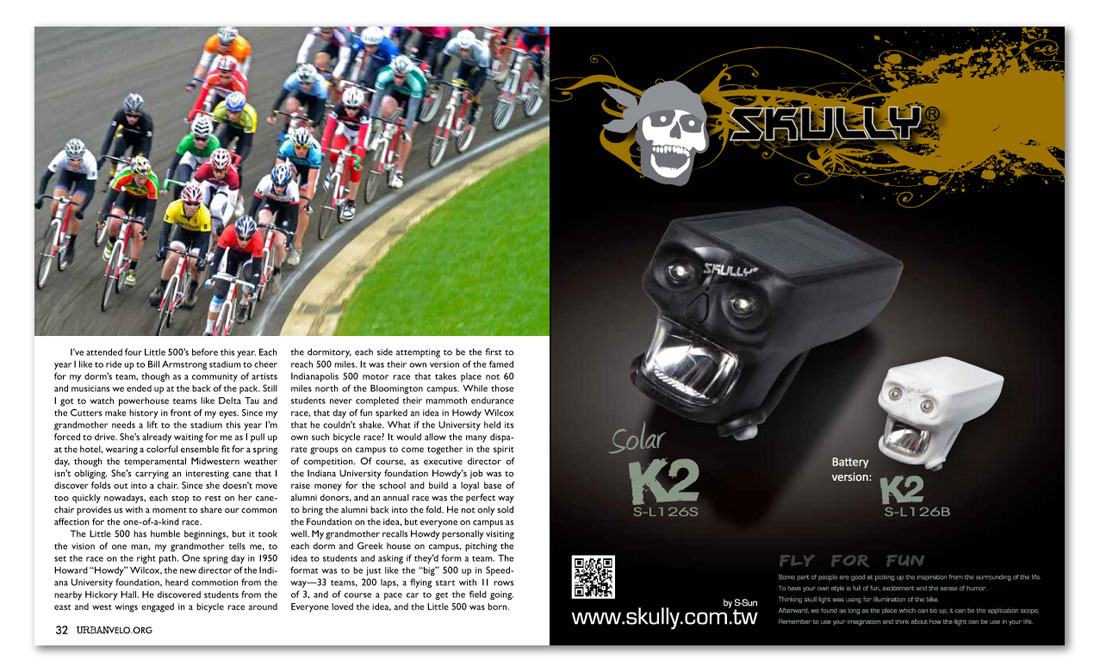


I’ve attended four Little 500’s before this year. Each year I like to ride up to Bill Armstrong stadium to cheer for my dorm’s team, though as a community of artists and musicians we ended up at the back of the pack. Still I got to watch powerhouse teams like Delta Tau and the Cutters make history in front of my eyes. Since my grandmother needs a lift to the stadium this year I’m forced to drive. She’s already waiting for me as I pull up at the hotel, wearing a colorful ensemble fit for a spring day, though the temperamental Midwestern weather isn’t obliging. She’s carrying an interesting cane that I discover folds out into a chair. Since she doesn’t move too quickly nowadays, each stop to rest on her cane-chair provides us with a moment to share our common affection for the one-of-a-kind race.
The Little 500 has humble beginnings, but it took the vision of one man, my grandmother tells me, to set the race on the right path. One spring day in 1950 Howard “Howdy” Wilcox, the new director of the Indiana University foundation, heard commotion from the nearby Hickory Hall. He discovered students from the east and west wings engaged in a bicycle race around the dormitory, each side attempting to be the first to reach 500 miles. It was their own version of the famed Indianapolis 500 motor race that takes place not 60 miles north of the Bloomington campus. While those students never completed their mammoth endurance race, that day of fun sparked an idea in Howdy Wilcox that he couldn’t shake. What if the University held its own such bicycle race? It would allow the many disparate groups on campus to come together in the spirit of competition. Of course, as executive director of the Indiana University foundation Howdy’s job was to raise money for the school and build a loyal base of alumni donors, and an annual race was the perfect way to bring the alumni back into the fold. He not only sold the Foundation on the idea, but everyone on campus as well. My grandmother recalls Howdy personally visiting each dorm and Greek house on campus, pitching the idea to students and asking if they’d form a team. The format was to be just like the “big” 500 up in Speedway—33 teams, 200 laps, a flying start with 11 rows of 3, and of course a pace car to get the field going. Everyone loved the idea, and the Little 500 was born.